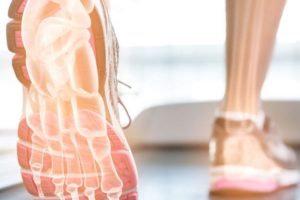What is the best surface to run on?
If you’ve had a video running analysis, you may already know the answer to this question. Once the cherry blossoms are in bloom it’s a clear signal that springtime has arrived in DC. For many of us, that means it’s time to dust off our sneakers and head outside for a run. (Or maybe it means sticking to the treadmill for allergy sufferers.) As people start to increase their running mileage, they often wonder what kind of surface is best to run on to decrease the risk of injury. First let’s look at each type of running surface and evaluate its pros and cons. Once a verdict is reached – be sure to stay tuned for our upcoming post about our favorite places to run in DC!
Are soft surfaces better for running?
It was once thought that running on softer surfaces, such as grass and dirt, helped reduce the risk of running-related injuries; however, current studies challenge this theory. While running on softer surfaces may feel “nicer” or “easier on the body”, it does not necessarily reduce the risk of injury. Softer surfaces can actually increase the amount of work our legs have to do in order to keep our bodies upright. Running on soft surfaces exclusively can also increase the risk of spraining an ankle or overuse injuries of the leg.
What about running on hard surfaces?

Running on asphalt/paved roadways and concrete sidewalks wonderfully accessible; most runners simply lace up their sneakers, walk out the front door, and start their stride. However, running exclusively on hard surfaces is tough on joints, and can lead to degeneration and arthritis. Not to mention the added hazards of traffic, potholes and curbs. If softer surfaces aren’t the answer, and harder surfaces aren’t the answer, our question remains. What surface should I run on?
The answer: All of them!
Studies show that the type of surface we run on is not a primary determinant for risk of running-related injuries. This means that if you like running on a paved bike trail, go for it! If you like running on a soft and windy nature trail, do it! When it comes to running, there are pros and cons to running on each surface. The surface type shouldn’t stop you. In fact, we encourage you to try them all. Since running is a repetitive activity, it is best to vary your training surfaces to provide different stimuli for your body. The more you switch your running surface up, the more your legs and body will have to adapt, which can strengthen your legs and help reduce your risk of injury. Let’s dig deeper and look at the advantages and disadvantages of four different types of running surfaces:
Grass
Advantages
Grass is a natural surface, so the impact on joints is lessened, especially when compared to asphalt or concrete. Grassy areas also tend to be flatter, offering runners plenty of space.
Disadvantages
Grassy terrain can still be uneven due to divots and holes, and this inherent unevenness can tire a runner’s legs out quickly. Keep in mind that rain turns grass into a slippery proposition.
Bottom Line
Running on grass works the leg muscles hard, so it’s great for building strength, as well as for speed work. However. runners with unstable ankles – or allergies – should tread carefully.
Trail
Advantages
For runners who enjoy a constant change of scenery, trails will always offer more allure. Since trails are considered a medium to soft surface, overuse injuries are less common.
Disadvantages
As with grass, weather dictates safety. Rain can create a dangerous, muddy surface, while drought creates a path that’s harder on joints. Obstacles such as roots and debris can also lead to injury.
Bottom Line
For runners craving a challenging and ever-chanaina route, it’s hard to beat a trail. However. trail running demands vigilance; runners must be at their physical and mental peaks to avoid obstacles.
Track
Advantages
Most synthetic tracks feature a forgiving surface, which is better for joints, especially on straightaways. The consistency is also great for speed work, and runners looking to measure distance easily.
Disadvantages
Obviously, running round and round can become tedious, especially for runners who hate monotony. Keep in mind that if your track is banked, those curves place stress on joints.
Bottom Line
For sprinters, the track is the safest bet. For distance runners, working on a track is a great way to take the burden off joints – as long as you vary your running surfaces from run to run.
Treadmill
Advantages
During hot weather or allergy season, treadmills are invaluable. They provide the consistency of a smooth surface – which is easier on legs – and the ability to monitor distance and speed.
Disadvantages
The hardness of the surface varies by machine, and outdoor purists will bemoan the lack of a natural setting. Treadmill running
can also be costly due to a gym membership, or outright purchase.
Bottom Line
With the controls at a runner’s fingertips, they have the luxury of setting any pace, and working on speed or distance. Treadmill
bonus: most will let runners control the level of incline, too
How do I avoid running-related injuries this season?
Running is one the most accessible and common forms of exercise. It is also one of the easiest ways to develop an injury. Sixty percent of runners experience an injury severe enough to sideline them from activity. The most common injuries from running include plantar fasciitis, achilles tendonitis, runner’s knee, IT band syndrome, shin splints and stress fractures. If you are struggling with running on a particular surface or are dealing with a running-related injury, schedule an initial evaluation with one of our physical therapists at Release Physical Therapy. The best way to avoid injury is to prevent it. Consider a running assessment to keep you running injury-free.
Video running analysis Washington in DC
Whether you are new to running, training for a marathon or just run to stay fit, a formal running analysis led by a trained physical therapist isn’t just beneficial, it’s necessary. We offer a comprehensive running video analysis to identify functional weaknesses, postural compensations and faulted mechanics to improve performance and prevent injury.
How does a video running analysis work?
Your physical therapist will take a video of you while you run in order to your movement including your gait, motion and stride. We use a running software to track foot metrics, distance, pace and time. Your physical therapist will review the video in slow-motion to identify functional weaknesses, postural compensations, and faulted biomechanics, such as stride length, foot contact with ground, weight distribution, and range of motion in the hips, knees, and ankles. Your physical therapist will review the findings with you and discuss your goals to determine an individualized program to re-train your muscles, avoid injury, reduce pain and increase speed.
Scheduling a video running analysis today
Don't let a running-related injury stop you from enjoying your runs this season. Schedule a running analysis with one of our physical therapists today. Remember - the best way to avoid an injury is to prevent it! To schedule a video running analysis, call our office at (202) 974-6621 or schedule an appointment online.

Trever Reed PT, DPT, CMTPT, OCS, COMT
Dr. Trever Reed is a well rounded physical therapist who believes in helping patients reach their goals. Dr. Reed believes in building a strong therapeutic alliance with his patients to help them participate in the activities that they enjoy. Dr. Reed received his Doctorate of Physical Therapy from Misericordia University and obtained a Bachelor’s degree in Business Administration with a Healthcare Management specialization from Misericordia University. He completed a physical therapy orthopedic residency and went on to become a board certified orthopedic specialist. Additionally, he obtained a certified orthopedic manual therapist (COMT) certification. He is currently working towards his Dry Needling certification and is excited to continue to grow his skill set to help his patients as best as possible. Dr. Reed previously worked in a busy outpatient orthopedic setting where he was a staff physical therapist and then a clinic director.
Outside of the clinic, Trever is an avid runner and runs for the Georgetown running club (GRC). He is also a big basketball fan and can be frequently found at Washington Wizards games.

